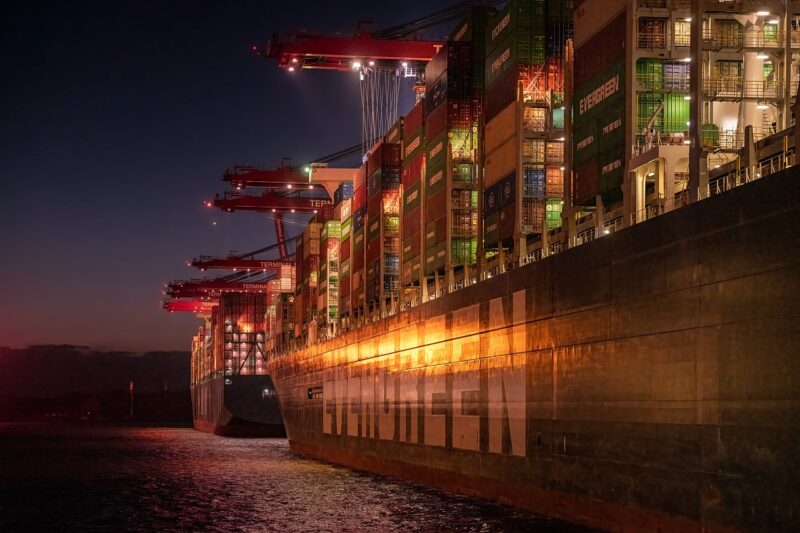How Massive Cargo Ships Are Built to Carry the World’s Goods Across Oceans
November 11, 2024

Cargo ships are the titans of the sea, enabling the global movement of goods across vast distances. As the backbone of international trade, their construction involves an intricate blend of engineering, technology, and craftsmanship. In this article, we will delve deep into the processes involved in building these colossal vessels, exploring how they are designed, constructed, and equipped to traverse oceans while carrying the world’s goods.
1. Understanding Cargo Ships: Types and Purpose
Cargo ships vary in design based on their intended purpose. Here are the primary types of cargo ships:
- Container Ships: Designed to carry standardized cargo containers, which makes loading and unloading efficient. These ships dominate the shipping industry due to their versatility and efficiency.
- Bulk Carriers: Used for transporting unpackaged bulk goods like coal, grain, and minerals. They often feature large hulls to accommodate massive quantities of goods.
- Tankers: Specifically designed to carry liquid cargo such as oil, chemicals, or liquefied natural gas in large tanks within the hull.
- Ro-Ro (Roll-on/Roll-off) Ships: Designed for transporting wheeled cargo such as cars and trucks, allowing them to roll on and off the ship easily.
Each type of cargo ship has unique features tailored to its specific cargo, which informs the design and construction process.
2. Designing Cargo Ships: Blueprinting the Giants
The design phase is critical for the efficiency and safety of cargo ships. Here, naval architects employ advanced software and simulations to develop comprehensive blueprints. Various factors considered during the design process include:
- Hydrodynamics: The ship’s shape is optimized to reduce water resistance and enhance fuel efficiency. A well-designed hull allows cargo ships to glide through water smoothly, saving energy and time.
- Load Distribution: Proper weight distribution is crucial for stability and safety while sailing. The designers ensure that cargo is evenly balanced to prevent capsizing or structural damage.
- Safety Features: Plans must include safety protocols such as watertight compartments and fire safety systems. These features protect the vessel and crew in emergencies.
- Sustainability: With increasing focus on environmental impact, modern designs often incorporate energy-efficient engines and eco-friendly materials to minimize carbon footprints.
This meticulous planning ensures that the ship will meet the significant demands of maritime logistics and comply with international safety standards.
3. Building the Beast: Construction Process
Once the design is finalized, the construction of cargo ships begins in shipyards, often sprawling facilities equipped with cutting-edge technology. The construction process can be broken down into several stages:
3.1. Steel Cutting and Assembly
It all starts with the raw materials – massive sheets of steel. These sheets are cut into specific shapes using laser or plasma cutting technology.
* The cut pieces are then assembled into sections called blocks, which form the ship’s hull. A typical cargo ship may consist of hundreds of blocks, which are fabricated separately before being joined.
3.2. Hull Construction
The blocks are gradually merged in dry docks where the hull takes shape. This involves welding the sections together, reinforcing joints, and ensuring structural integrity. At this stage, the ship’s necessary compartments and structures, like bulkheads and frames, are added.
3.3. Installation of Machinery
Before the hull is completely sealed, essential machinery and systems are installed. This includes:
- Engines: Large cargo ships use powerful engines that can be either diesel or a combination of diesel and marine gas oil depending on the design and environmental regulations.
- Ballast Systems: These systems are crucial for stability while the ship is loaded or empty by manipulating water in various compartments.
- Electrical Systems: Cabling for navigation, communication, and lighting is set up, ensuring the ship can operate effectively once launched.
3.4. Final Assembly and Outfitting
As construction progresses, the ship undergoes outfitting, which involves welding the deck, installing onboard systems (e.g., ventilation, heating), and painting the hull to protect it from corrosion.
* Additionally, safety and navigation equipment are fitted, aligning with international maritime regulations. Once outfitting is complete, the ship is ready for launching.
4. Launch Day: Transitioning from Yard to Sea
The launch is an exciting milestone. The ship is typically slid into the water using a slipway or crane. Upon entering the water, it undergoes a series of tests to ensure everything is functioning correctly:
- Sea Trials: The ship is tested for performance, stability, and safety at sea. This includes testing engine capabilities, navigation systems, and emergency procedures to ensure the ship meets operational standards.
- Final Adjustments: Any necessary adjustments or repairs are made based on results from the sea trials before the ship is delivered for commercial use.
5. Technology Innovations in Cargo Ship Construction
Innovations play a significant role in modern cargo ship construction, enhancing efficiency, safety, and environmental sustainability:
- 3D Printing: This technology is revolutionizing the production of smaller parts and components, minimizing waste and significantly reducing lead times for repairs and replacements.
- Automation and Robotics: Automated systems are increasingly being integrated into shipbuilding processes, improving precision and reducing labor costs, especially in welding and painting tasks.
- Sustainable Materials: The use of alternative materials, like lightweight composites and eco-friendly paints, is becoming prevalent to minimize the environmental impact of ship construction and operation.
- Smart Shipping Technologies: Equipped with IoT devices, modern cargo ships now monitor their performance in real-time, optimizing fuel consumption and enhancing safety protocols at sea.
These advancements not only streamline the construction process but also pave the way for more sustainable and efficient shipping practices.
Conclusion: The Marvel of Modern Maritime Engineering
Cargo ships are vital to the global economy, facilitating international trade and connecting markets. Their construction is a marvel of modern engineering, blending technology and craftsmanship to create vessels capable of withstanding the harsh conditions of the sea while transporting goods safely and efficiently. As advancements in engineering and technology continue to develop, cargo ships will evolve, becoming even more efficient and eco-friendly, ensuring they remain integral to global trade in the years to come.
Whether carrying vital supplies or luxury goods, the journey from shipyard to sea showcases humanity’s engineering prowess and dedication to innovation.







